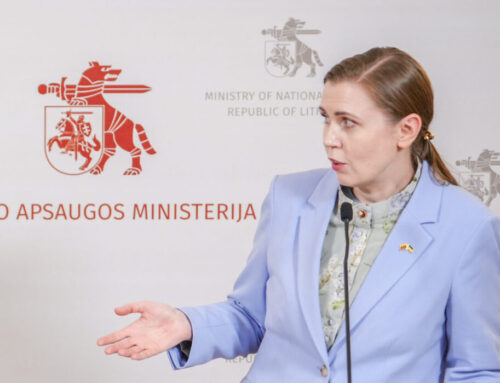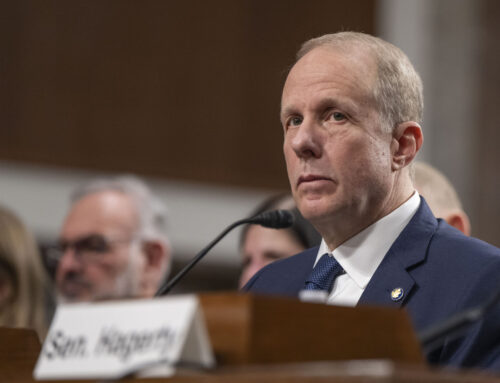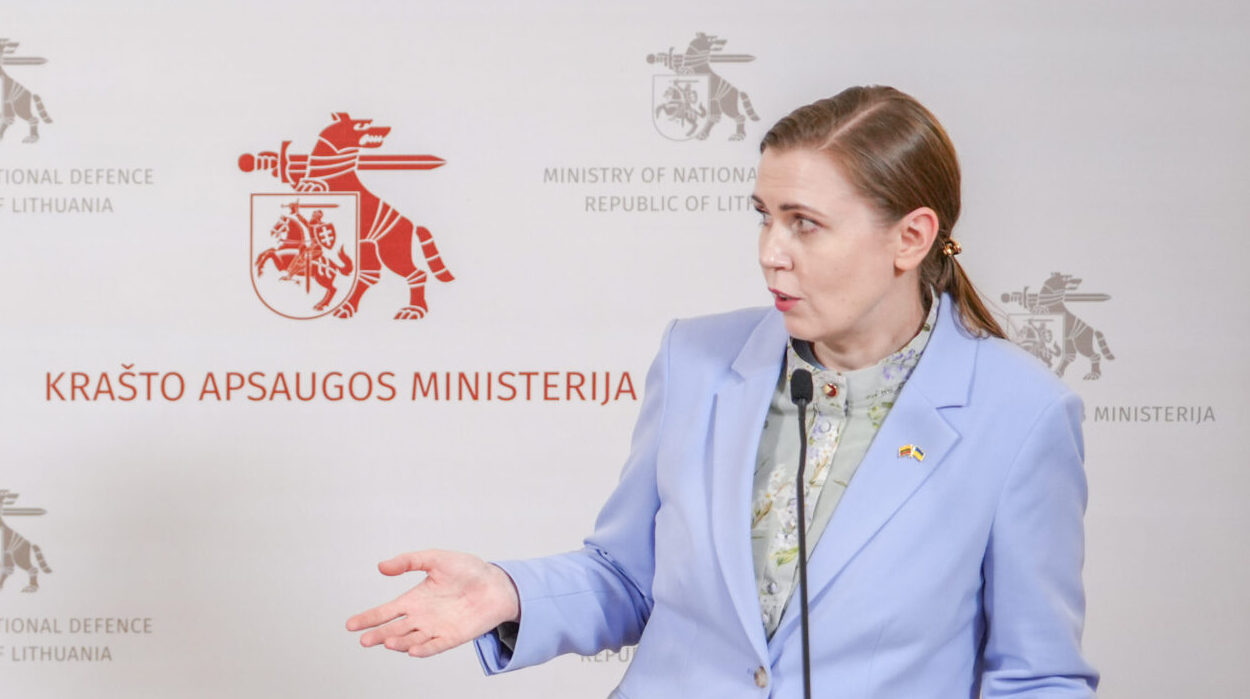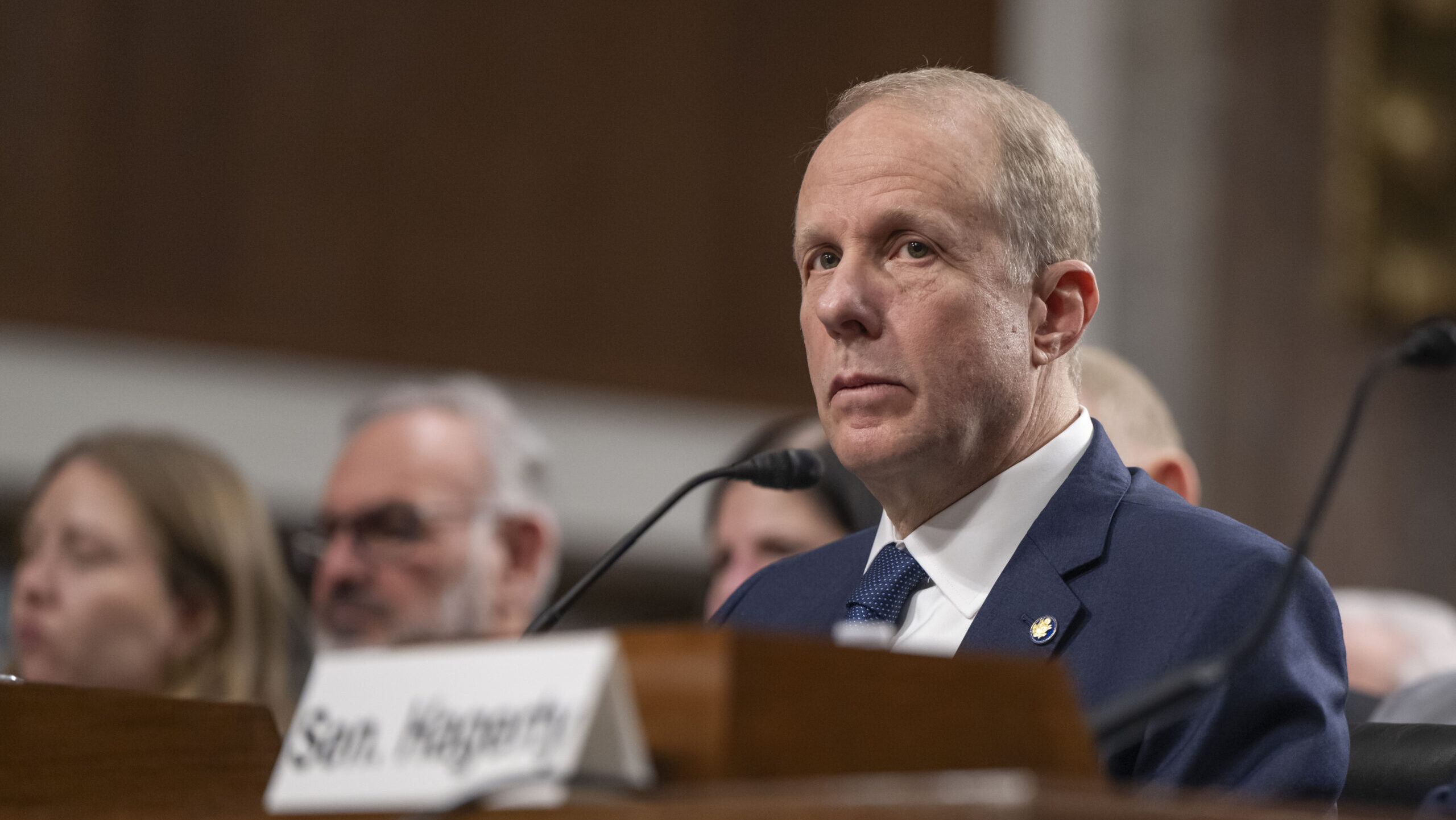Ice floes surround the U.S. Coast Guard Cutter Healy in the Arctic Ocean on July 29, 2017. The cutter is the largest icebreaker in the Coast Guard and serves as a platform for scientific research. (Photo by Bonnie Jo Mount/The Washington Post via Getty Images)
WASHINGTON — Officials from the United States, Canada and Finland today signed a joint memorandum of understanding, the next step in the trilateral high-north focused ICE Pact initiative, one of the Biden administration’s last, big foreign policy efforts.
The resources in the Arctic are “vital to the economic, national and homeland security of the United States and our allies,” Department of Homeland Security Secretary Alejandro Mayorkas said today at a ceremony held at DHS’s headquarters. Mayorkas was flanked by Jean-Yves Duclos, Canada’s minister of public services and procurement; Willie Rydman, Finland’s minister of economic affairs; and Amos Hochstein, a special advisor to President Joe Biden.
“Ceding these reserves and the batteries, semiconductors, magnets and energy resources that are derived from them to our adversaries in Russia or to our rivals in the People’s Republic of China, could soon lead to higher prices at our gas pumps and on our heating bills,” he continued. “It could jeopardize the readiness of our armed forces. It could compromise the security of our computers, cars and cell phones, and in a crisis, it could subject us to Russian or Chinese largesse in order to access essential goods like food and medical supplies, among many other risks.”
The new memorandum has four elements, according to a DHS statement, calling for enhanced information exchange between the three countries, workforce development collaboration, engagement with allies and partners, and research and development.
“Today, we’re taking the next step under that agreement, the joint memorandum of understanding we’re signing today will develop world-class Arctic and polar icebreakers through the exchange of knowledge and resources in each other countries, equally importantly, that will create more good paying jobs in the United States, in Finland and in Canada,” said Duclos.
The new memorandum follows an announcement made by the three countries’ leaders during the NATO summit earlier year where they announced the plan to work together to develop and build advanced Arctic icebreakers using the economic might of the American defense industrial base combined with the niche shipbuilding skill sets of the Canadian and Finnish workforces.
RELATED: ICE Pact: Why The US Had To Recruit Help In Race With Russia, China For Arctic Icebreakers
The need for such a collaboration is critical, as Breaking Defense previously reported, Russia is the world’s leading producer of icebreakers, and Mayorkas cited comments from President Vladimir Putin made just last week when he welcomed one of his fleet’s newest ships.
“President Putin told assembled shipbuilders that, quote, strengthening the nation’s icebreaker fleet is crucial to our plans for Arctic development and boosting cargo traffic,” the secretary said.
Finland’s Rydman, whose country is credited as one of the most skilled builders of icebreaking ships in the world, said Russia’s invasion of Ukraine has also shifted how Helsinki and other capitals must view the Arctic.
“Previously, the Arctic and its fragile environments offered untapped business potential to be realized in a sustainable way. But as said, now, our concerns are different,” he said. “Current geopolitical situation means that we must be able to operate in the polar regions to maintain peace and stability, without which there is no or limited room for new, faster shipping lanes, nor the sustainable exploration of raw materials.”
In practical terms, Finland’s expertise in building icebreakers will potentially translate into significant cost savings for both the United States and Canada. Jason Moyer and Rickard Lindholm, associates at the Washington, DC-based think-tank the Wilson Center, recently wrote that building an icebreaker in Finland would be approximately “a fifth of the price” compared to the United States and could be “completed in about 24 months after a contract is signed.”











